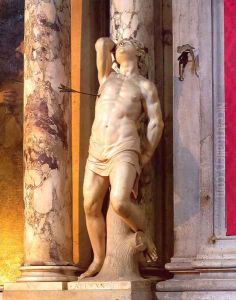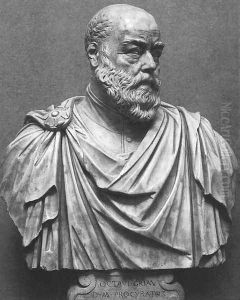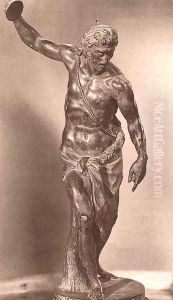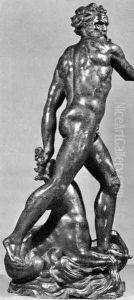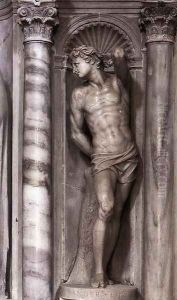Alessandro Vittoria Paintings
Alessandro Vittoria was one of the significant figures in the field of Italian sculpture during the Renaissance, particularly known for his portrait busts and works in terracotta. Born in the year 1525 in Trento, which was then part of the Holy Roman Empire and now is in Italy, Vittoria was to become a prominent artist in the Venetian school.
Vittoria moved to Venice in his youth and became a pupil of Jacopo Sansovino, who was a major influence on his style and technique. Under Sansovino, Vittoria honed his skills and was introduced to the Venetian art scene, which was booming at the time with the Renaissance's spread northward from its origins in Florence and Rome. Vittoria's early works already showed a remarkable understanding of human anatomy and expression, which would become hallmarks of his mature style.
Throughout his career, Vittoria became known for his finely detailed and expressive busts, which often displayed a Mannerist elegance and elongation of form. He was adept at working in various mediums, including marble, bronze, and terracotta. His terracotta busts, in particular, are celebrated for their liveliness and the skill with which he used the medium to create detailed textures and effects, such as the rendering of hair and the softness of flesh.
In addition to portrait busts, Vittoria also produced religious statues and decorative works for buildings, collaborating with architects and integrating his sculptures into the fabric of Venice's architecture. His work was characterized by a balance of classical ideals with the more dynamic and complex Mannerist style, which was becoming increasingly popular during his lifetime.
Vittoria's talents were recognized by his contemporaries, and he was a successful artist in his time. He was also a member of the prestigious Venetian Fraglia, or guild, of painters and sculptors, which further attests to his standing among the artists of Venice. His influence extended to his pupils and followers, helping to disseminate his style and contributing to the Venetian Mannerist aesthetic.
Alessandro Vittoria continued to work and contribute to the arts up until his death in Venice in 1608. His legacy is preserved in the many works that survive in museums and collections, as well as in situ in Venice, where his sculptures still adorn churches and palazzi, allowing us to witness the enduring beauty and mastery of his craft.
